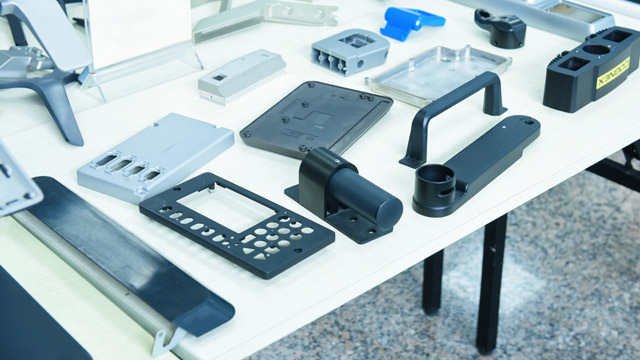
Tel : +86 15876452106
Email : fts-sales@fulfilfts.com.cn
Address : Huatai Science and Technology Park, Xiegang Town, Dongguan City
In the production and processing of die casting mold parts, due to its complex shape and structure, each part in the cross-section of the size of the existence of more obvious differences, so in the heat treatment, each part of the heating and cooling rate is not the same. This situation may lead to the formation of very different thermal stresses, organizational stresses and phase transition volume in the various parts of the part. This can cause abnormal expansion or contraction in the volume of the part, resulting in large deviations in size and shape, or even cracking.
Caused by die casting die heat treatment deformation and cracking of the reasons are manifold, including the chemical composition of steel and the original organization, the structural shape of the parts and cross-section size as well as heat treatment process and other factors will be involved. In actual production, deformation is often unable to completely eliminate, can only minimize the extent of its occurrence, but as long as the appropriate means, cracking can be avoided.

Pre-heat treatment
The so-called preparatory heat treatment is relative to the final heat treatment, that is, before the final heat treatment to add a play a preparatory role in the heat treatment step, this step can be for the final heat treatment to provide a good mechanical properties or organization. Common preparatory heat treatment processes include annealing, normalizing and tempering.
For eutectic steel stamping die preparatory heat treatment, focusing on the elimination of forging within the network of secondary carburization, grain refinement and internal stress. The specific process is to carry out normalizing treatment first, and then carry out spheroidizing annealing. For stamping concave die parts, low temperature tempering should be used first to stabilize the treatment. As for those molds with more complex shape and high precision requirements, due to the higher possibility of deformation and cracking in heat treatment, appropriate tempering treatment should be carried out after the completion of its rough machining and before the start of finish machining to prepare the organization for the final heat treatment in order to avoid cracking as much as possible.
Quenching heating methods and protection of parts
Quenching and tempering are the processes most likely to deform and crack parts. For some small die-casting molds, slender cylindrical parts or high alloy steel mold parts, etc., should avoid the use of direct heating of the quenching method, but first preheated to 520 to 580 degrees Celsius, and then put into a medium temperature salt bath furnace heating to quenching temperature. Practice has shown that the use of this heating method of parts, than directly in the electric furnace or reflector furnace heating quenching, deformation is significantly smaller, cracking can also be basically avoided.
Quenching, austenitic parts if the heating temperature is too high, will make the grain coarse, and easy to cause oxidation, decarburization and other phenomena, resulting in parts deformation and cracking; while the temperature bias words low will cause the parts of the inner hole shrinkage, hole size becomes smaller. Therefore, the heating temperature should be allowed in the range, try to choose the upper limit of the temperature for quenching. For alloy steel, the heating temperature is high, will cause the expansion of the bore, the hole size becomes larger, it is best to choose the lower limit of the permissible temperature.
In addition, in the quenching and tempering treatment, it is necessary to take measures to effectively protect the parts that are prone to deformation and cracking, so that their shapes and cross-sections are symmetrical and the internal stresses are balanced. This is especially true for those parts with complex shapes. Commonly used protection methods include bundling method, filling method and plugging method.
Cooling method optimization and coolant selection
When the die casting mold parts heated up, from the furnace should not be put directly into the coolant, it is easy to cause the local temperature difference is too large and lead to deformation and cracking. The correct method is should be placed in the air for pre-cooling, and then into the coolant quenching. In order to ensure that the parts of all parts of the cooling rate is uniform, into the coolant should also be appropriate rotation, and the direction of rotation is best not fixed.
The choice of coolant is equally important. For alloy steel, the use of potassium nitrate and sodium nitrite hot bath isothermal quenching or graded quenching is an effective way to reduce the deformation, especially for the treatment of complex shapes, dimensional requirements for precise die-casting molds. Some porous mold parts, with cooling in oil contraction, cooling in nitrate expansion characteristics, the reasonable use of two different media, can also reduce the deformation of parts due to quenching.
Control of tempering treatment
Die casting mold parts in the coolant after quenching, should not stay in the air for too long, but should be promptly put into the tempering furnace for tempering treatment, in order to eliminate the internal stress of the parts, reduce deformation and cracking tendency. Especially for some need for wire cutting processing die casting mold parts, in the wire cutting processing before the use of graded quenching and multiple tempering heat treatment, can effectively improve the hardenability of the parts, so that its internal stress distribution is uniform, not easy to deformation and cracking. In the tempering process, be sure to avoid the appearance of low temperature tempering embrittlement and high temperature tempering embrittlement.
 Fulfil Acme Technology Co., LTD
Quality First, Brand Awareness,Quality for Credit,
Fulfil Acme Technology Co., LTD
Quality First, Brand Awareness,Quality for Credit,Home Service Products Industries Company Resources Contact us
Mold Design Precision die-casting Stamping process CNC machining Polishing Painting Product Assembly Air Leaking Test
Display Telcom Device Aviation Nautical Vehicle Parts Medical equipment
Company introduction Factory Pictures Employee Style Enterprise Certificate Partner